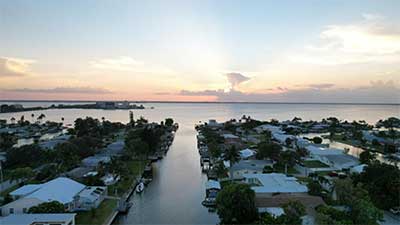Perfect exterior painting depends on timing as much as paint quality. This guide explains when not to paint outside, helping you avoid weather conditions that lead to failed projects. Learn which temperatures, humidity levels, and environmental factors to watch for, so you can achieve a durable, professional-looking finish that lasts for years.
Key Takeaways
- Timing makes all the difference for beautiful exterior painting—choose days with moderate temperatures for a finish that lasts years.
- Morning provides cooler conditions with consistent light, while late afternoon offers perfectly dry surfaces for optimal paint application.
- Wind can ruin a fresh paint job by blowing debris into wet surfaces—professional techniques protect your home during outdoor painting.
- High humidity and wet surfaces spell disaster for paint adhesion—proper drying conditions prevent blistering and peeling.
- Waiting 24 hours after painting protects your exterior from rain damage and ensures proper curing for long-lasting results.
- Hire OnDemand Painters and enjoy your weekend while we handle the weather-watching and perfect timing for your exterior paint job.
Weather Conditions to Avoid for Painting Outside
Extreme Cold
Effects on Exterior Paint Application and Adhesion Cold weather affects paint consistency and performance, making it thicker and harder to apply. Below 50°F, paint takes longer to dry and cure, leading to poor adhesion, bubbling, and uneven coverage.
Recommended Minimum Temperatures Latex paints shouldn’t be applied below 50°F, some acrylic latex can go as low as 35°F. Oil-based paints need at least 40°F.
Impact on Drying Time Cold slows the drying process, increasing the risk of paint failure. Latex paint usually dries in 1-2 hours, but in the cold, it can take much longer, leading to issues like blistering.
Excessive Heat
How High Temperatures Affect Paint Temperatures above 90°F cause paint to dry too quickly, preventing proper adhesion and leading to cracking and blistering. Solvents evaporate too fast, resulting in an uneven finish.
Optimal Temperature Range for Painting The ideal range is between 50°F and 90°F. This allows the paint to dry at a suitable pace for a smooth finish.
Risk of Paint Baking and Blistering High surface temperatures can bake the paint, creating a brittle finish prone to cracking. Blistering occurs when the outer layer dries faster than the inner layers, trapping solvents and moisture.
Wet / Rainy Conditions
Painting on Wet Surfaces Painting on wet surfaces prevents proper paint adhesion, causing blistering, peeling, and flaking. Ensure surfaces are completely dry before painting, which may require several days after washing or rain. Clean thoroughly to remove dirt and mildew.
Risks of Rain and Humidity Rain and humidity can wash away fresh paint, prolong drying times, and lead to uneven finishes. Choose a dry day with moderate humidity and no rain forecast for at least 24 hours.
How Moisture Affects Paint Durability Excess moisture can cause paint to bubble, blister, and promote mold growth. Avoid painting in wet conditions and use high-quality, moisture-resistant paints.
High Humidity
Challenges of Painting in Humid Weather High humidity slows drying, leading to wet, tacky paint and increased risk of dirt and insects embedding in the paint. This can cause uneven, blotchy finishes, and issues like bubbling and peeling.
Ideal Humidity Levels for Painting Optimal humidity for painting is 40% to 70%. This range allows paint to dry properly, adhering well and forming a smooth finish. If humidity is too high, wait for better conditions or use paints formulated for high moisture levels. Monitor the weather forecast and plan accordingly.
Windy Conditions
Issues with Wind During Painting
Windy conditions can significantly impact the quality of your exterior painting projects. When painting outdoors, wind poses several challenges that can compromise the final result. Strong winds can cause the paint to dry too quickly, leading to uneven coverage and a rough, unsightly finish.
Wind can also blow dust, dirt, and other debris onto the freshly painted surface, embedding contaminants into the paint and creating an uneven texture. Wind can also make it difficult to control the application of paint, resulting in drips, splatters, and streaks.
Preventing Debris and Contaminants
To achieve a high-quality paint job in windy conditions, it is essential to take steps to prevent debris and contaminants from affecting the newly painted surface. Here are some strategies to consider:
- Monitor Weather Conditions: Before starting your project, check the weather forecast and choose a day with minimal wind. Ideally, paint when wind speeds are below 15 miles per hour to reduce the risk of debris and ensure better control over the painting process.
- Use Windbreaks: Set up temporary barriers, such as tarps or screens, around the area you are painting. These windbreaks can help shield the surface from gusts of wind and prevent debris from blowing onto the wet paint.
- Clean the Surface Thoroughly: Ensure the exterior surface is clean and free of dirt, dust, and other contaminants before starting the painting process. This will help the paint adhere better and reduce the risk of debris becoming embedded in the finish.
- Work in Sections: Paint smaller sections at a time, allowing you to maintain better control and reduce the impact of wind. By focusing on smaller areas, you can ensure each section is properly covered and dries evenly before moving on to the next.
- Choose the Right Time of Day: Plan your painting project for early morning or late afternoon when wind speeds are typically lower. Avoid painting during the peak of the day when winds are usually stronger.
- Use High-Quality Paints: Select paints specifically formulated for exterior use and that have properties to withstand wind and other environmental factors. High-quality paints are more likely to adhere well and provide a durable finish even in challenging conditions.
Best Time of Day for Painting Outdoors
Morning vs. Afternoon
Both morning and afternoon have their advantages and disadvantages, and understanding these can help you decide when to start painting.
Morning:
- Pros: Morning temperatures are generally cooler, which helps to prevent the paint from drying too quickly. This can lead to a smoother finish and better adhesion.
- Cons: Morning dew or moisture on the exterior surfaces can affect paint application, so it’s essential to ensure the surface is completely dry before starting.
Afternoon:
- Pros: By the afternoon, any morning dew has evaporated, and the surfaces are typically dry and ready for painting. The temperatures are also more stable compared to the early morning.
- Cons: Afternoon temperatures can rise significantly, especially in warmer climates, which might cause the paint to dry too quickly, leading to issues like cracking and peeling.
Temperature Variations
- Morning: Temperatures are cooler and more stable, which is ideal for painting. However, starting too early can mean working with dew or residual moisture from the night.
- Afternoon: Temperatures can peak, especially in the early to mid-afternoon. High temperatures can cause paint to dry too fast, affecting adhesion and finish. Painting later in the afternoon can help avoid the peak heat but still provide adequate time for the paint to dry before evening.
Sunlight Exposure
- Direct Sunlight: Painting in direct sunlight, particularly during the peak hours of the day, can cause the paint to dry too quickly. This rapid drying can lead to an uneven finish and problems with adhesion.
- Shade: Aim to paint in shaded areas or follow the shadow around the house. This can help maintain a more consistent temperature and prevent the paint from drying too fast.
Importance of Adequate Lighting for Outdoor Painting Projects
Good lighting helps you see the surface clearly, ensuring even coverage and identifying any missed spots.
- Morning: Natural light in the morning is generally soft and even, providing good visibility without harsh shadows.
- Afternoon: Afternoon light can be stronger, casting shadows that might make it harder to see your work. Position yourself to minimize these shadows, or use additional lighting if necessary.
Conclusion
Understanding when not to paint outside is just as important as knowing the right techniques. Extreme temperatures, high humidity, rain, and wind can all sabotage your painting project before it even dries. By avoiding these problematic conditions and working during optimal times of day, you’ll save time, money, and frustration. For stress-free results, consider hiring our OnDemand Painters who monitor weather conditions and schedule your project at the perfect time—while you enjoy your weekend instead of watching weather forecasts.
Conclusion
Understanding when not to paint outside is just as important as knowing the right techniques. Extreme temperatures, high humidity, rain, and wind can all sabotage your painting project before it even dries. By avoiding these problematic conditions and working during optimal times of day, you’ll save time, money, and frustration. For stress-free results, consider hiring our OnDemand Painters who monitor weather conditions and schedule your project at the perfect time—while you enjoy your weekend instead of watching weather forecasts.
FAQs for Exterior Painting
When should you not paint outside?
Avoid painting outside during extreme temperatures, high humidity, rainy, or very windy conditions. Cold weather (below 50°F) and excessive heat (above 90°F) can negatively affect the paint’s adhesion and drying process.
How do outdoor painting projects differ from indoor ones?
Outdoor painting projects require weather consideration, choosing paints suitable for various temperatures and humidity levels, and dealing with environmental contaminants like dust and dirt.
What is the ideal temperature to paint outside?
The ideal temperature for exterior paint projects is between 50°F and 90°F, with a relative humidity of 40% to 70% to ensure proper drying and adhesion.
How long does exterior paint take to dry?
Exterior paint drying time varies by type: latex paint generally dries to the touch in 1-2 hours, while oil-based paint takes longer, often needing up to 24 hours to dry fully, especially in optimal conditions.
Can oil-based paint be used for exterior surfaces?
Yes, oil-based paint can be used for exterior surfaces, but it is best applied in temperatures no lower than 40°F to ensure proper adhesion and drying.
Why is it important to consider weather when planning to paint outside?
Weather greatly impacts exterior paint projects. Painting outside in unsuitable conditions, such as extreme cold, excessive heat, rain, or high humidity, can lead to issues like poor adhesion and longer drying times. Ensure ideal conditions for the best results.
How long does exterior paint dry before it’s safe from rain?
Exterior paint should dry for at least 24 hours before it is exposed to rain. This ensures that the paint adheres properly and forms a durable, protective layer on the surface.



















